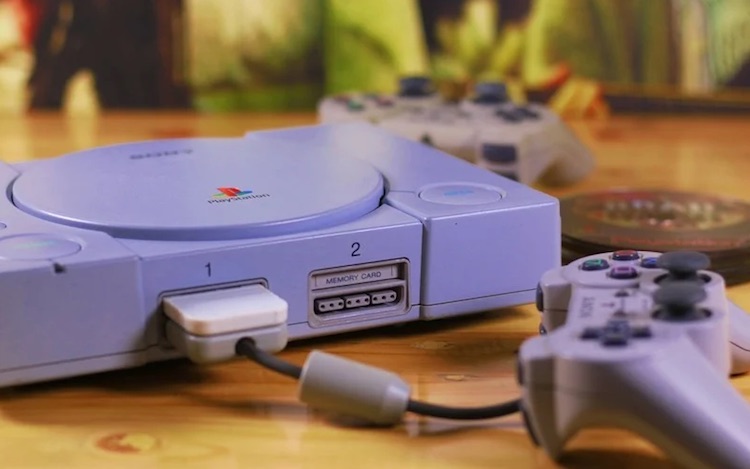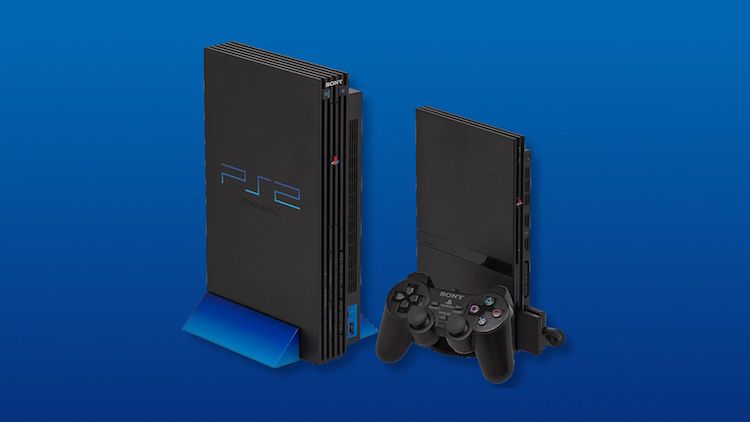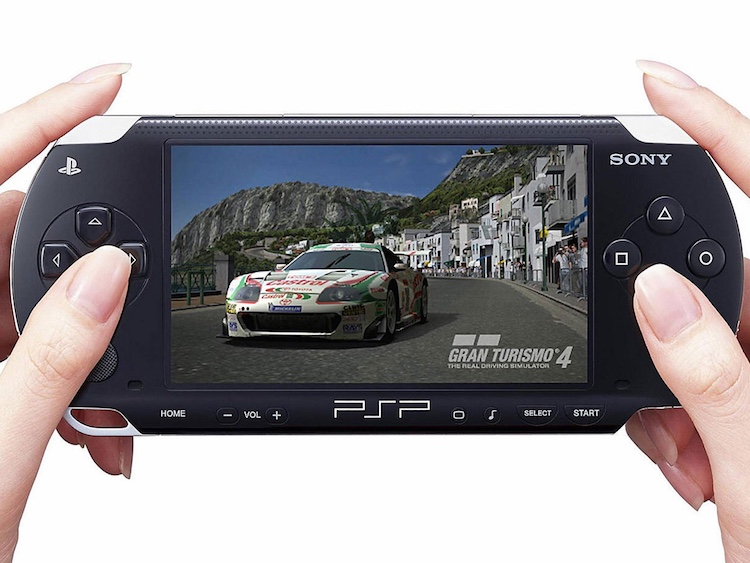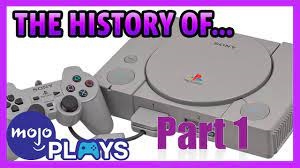History Of Playstation Consoles; King Of The Game World – Part One
Sony PlayStation family consoles have always been interpreted as a point for users to enter the world of video games, and the peak of this issue can be seen with the first generation in the mid-90s.
For this reason, it is not surprising that ordinary users use the word PlayStation to name game consoles.
Sony is certainly not the first company to launch a console. Companies such as Nintendo, Atari, and Sega are among the other manufacturers that have had great success before Sony launched the console. However, Sony certainly played a major role in making the video game world more attractive and new standards entered the industry.
The PlayStation 5 is currently the latest generation of popular Sony consoles, but what about the brand? We will discuss the history of the company’s consoles in detail below and examine the details of each separately…
PlayStation 1; Controversy with Nintendo

The first generation of the PlayStation family of consoles dates back to the 1991 part-time partnership between Sony and Nintendo. Nintendo at the time wanted to launch its SNES console with CD support. So it was decided that the development of part of the new Nintendo console would be left to Sony.
Later that year, Nintendo backed away from its commitment to Sony, and at CES 1991, it was announced that Nintendo would work with Philips to develop its optical drive.
Sony, on the other hand, did not intend to give up all its efforts and go its own way, despite the disruption of cooperation; In fact, the Japanese giant decided to put its efforts to work, and this led to the introduction of the original PlayStation console in 1994.
Sony later attracted a lot of attention at the 1995 E3 show by announcing the $ 299 original price of the original PlayStation.
Pricing was about $ 100 less than the Sega Saturn console in the US market.
Thus, the original PlayStation was among the first generation of consoles capable of performing 3D visual effects. The console is also known as the first popular, all-inclusive compact disc-based gaming device in history. This was in stark contrast to the rival Nintendo 64 console, which still used cartridges to run games.
Playing the game on a compact disc, although slower in loading speed, had a maximum storage capacity of 700 MB, compared to the 64 MB capacity of Nintendo 64 cartridges, which was a great success. This enabled the developers to implement a lot of playable content and several hours of music and sound into the games, as well as video content during the game development.
All of this made the original PlayStation game port for the Nintendo 64 console an unusual and bizarre process.
For example, with a port like Tony Hawk’s Pro Skater for the Nintendo console, it lost all of its potential in music, content, and video files.
The processor used in the original PlayStation was a 33 MHz RISC-based chip. The design of the console’s graphics processing unit was also entrusted to Toshiba, and it revolutionized the provision of hardware to provide 3D visual effects. In addition to the graphics processing unit, Toshiba also developed other original PlayStation quality audio and video components. Of course, the original PlayStation was not perfect.
The console of this Japanese giant did not have a distinctive 2D effects processor, and for this reason, some 2D games on the hardware of Sony rivals such as Sega Saturn looked better.
In 2000, at the beginning of the new millennium, Sony launched the PlayStation 1 (Play Station One) with a more compact design.
Nearly two decades later, in 2019, we saw the release of a mini-classic called the PlayStation Classic series, which evoked a sense of nostalgia and, of course, a lot of margins.
Some of the highlights of this legendary console include Wipeout, Final Fantasy 7, Tekken, Gran Turismo 1 and 2, Metal Gear Solid, Ape Escape, Spyro the Dragon, and Crash Bandicoot.
Facts About The Original Playstation Consoles And One
- The original version of the console came with controllers without any analogs and vibration motors, but later in 1997, Sony decided to offer controllers with two analogs as well as a dual shock motor. This is not the last time that Sony has introduced different controllers for a while after launching a console from the PlayStation family.
- In addition to the original PlayStation original models, Sony also introduced a developer model called the Net Yaroze, through which developers could develop their own games. This model, especially today, is one of the most popular products for PlayStation console owners.
- Some PlayStation models suffer from a technical problem that eventually affects their laser optical drive, making it difficult to load the game; What was the solution? Users solved the problem with surprise and surprise by turning their console upside down!
- Playing PlayStation 1 games required the disc to always remain in the device’s optical drive, but users realized that they could continue to play some games by removing the disc during the experiment. Apparently, these games were fully loaded on the device’s 2 MB RAM at this time.
- Sony later introduced an accessory called the Pocket Station for its fifth-generation console, which bore a strong resemblance to Sega’s VMU for the Dreamcast. It was actually an external memory card with a display on which users could play simple games.
PlayStation 2; The best console in Sony history?

How will you continue the success of PlayStation with another product? Good; You should have a $ 299 console called the PlayStation 2, which is almost superior to the previous generation console in almost every way.
Launched in 2000, the console provides users with advanced multimedia features thanks to DVD support. Now, why is this important? In fact, with the addition of this feature to the PlayStation 2, this device became one of the cheapest DVD players on the market.
Of course, the PlayStation 2 will never be recognized as containing the most powerful hardware among its time consoles. Microsoft’s Xbox consoles and Nintendo’s GameCube often showed better and more spectacular graphics.
However, over time, some gaming studios developed some of the best games in history, including Gran Turismo 4, Metal Gear Solid 2, Shadow of the Colossus, and the God of War series for the Japanese console. In fact, some of the first HD games in history (1080i), such as Gran Turismo 4 and Tourist Trophy, were formed at this time, and their taste is still under the tongues of those who managed to experience them at the time.
Another notable feature of the PlayStation 2 was its full compatibility with the previous generation.
That means you don’t have to forget all the titles you bought for your PlayStation 1 console and throw them in the trash.
As for the controller, Sony decided to apply the design used in the PlayStation 1 dual-shock controllers to its sixth-generation console. Of course, as we know about Sony’s perfect spirit, this Japanese manufacturer is very interested in change. Therefore, the buttons used in the PlayStation 2 controller were all made pressure sensitive. This means that when you press the X button more in a racing game, your car will accelerate faster.
As was the case with the original PlayStation, Sony launched a slim version of the PlayStation 2 shortly after its release.
The newer model doubled in popularity with its smaller, slimmer body. Also, instead of the middle DVD input slot, this time in the Slim model, an optical drive located at the top of the device was used. What else? This model contained a modem to connect to the Internet.
So in a nutshell, the PlayStation 2’s initial release compared to its competitors was accompanied by extensive third-party features, DVD distribution, and previous-generation support, making it the most popular console in history. According to the latest statistics, it is believed that to date, nearly 160 million units of this product have been sold worldwide.
Facts about the PlayStation 2
- It is said that Sony was forced to obtain special licenses from the Japanese government due to the possibility of using the PlayStation 2 for military purposes. One well-known but misleading report states that former Iraqi leader Saddam Hussein purchased hundreds of units of the console for military use and weapons development. The report was denied in 2000 by the UK Home Office.
- Some of the first PlayStation 2 series contained a hardware problem called DRE (Disc Read Error) that made it impossible to run some games and DVDs. This led to the formation of a lawsuit that was eventually settled out of court.
- In the first PlayStation 2 series, called the PlayStation 2FT, Sony introduced an adapter for online games and external hard drives as accessible accessories. The peripherals were connected through the ports on the back of the PlayStation 2, but the PlayStation 2 Slim lacked these ports.
- A special model of this console called PSX, which was released only in Japan, was a combination of PlayStation 2 and the features of a DVR device (with 160 to 250 GB of hard disk memory) and DVD burning capability. This console was the first product of the PlayStation family to use the Xross Media Bar UI interface. Sony later used this interface on PSP and PlayStation 3 consoles.
- During its release cycle, the PlayStation 2 hosted two popular accessories, including an EyeToy camera and a microphone for the Singstar series.
Portable PlayStation (PC); The new king

Between the introduction of the PlayStation 2 and the PlayStation 3, Sony decided to break with tradition and launch the family’s first handheld console, the PlayStation Portable, in 2004.
Unlike Nintendo handheld consoles, all of which had limited processing power, Sony designed its handheld console as powerful and impressive as possible; To the extent that PSP processing power was close to the home consoles of the time, including the PlayStation 2, another product from Sony and Dreamcast. This enabled the developers to port many titles directly to this device.
The handheld console had features such as a Memory Card Pro Duo, a built-in browser, and a large LCD.
By adding multimedia file playback feature and of course WiFi, you can get a good mindset from this device; An almost versatile device in its time.
Sony also used discs called UMDs, which were in fact a type of mini-disc, to offer PSP physical games. These disks had a capacity of about 2 GB, which is a complete advantage over regular disks, but nothing is perfect; UMD, despite its good capacity at the time, had a very slow and disappointing loading speed.
As usual, Sony decided to offer different models during the life cycle of this console.
The first model, known as the PSP-2000 (PSP-2000), came with a sleek design, USB charging, and twice as much RAM and internal storage. Then came the next device, the PSP-3000, which has a better display and a built-in microphone.
Later in the final years of the series, two new entries entered the competition. The first is the PSP, which used a sliding gamepad and 16 GB of internal storage, but Sony did not support UMD discs. PSP Street as the last device in this series did not experience much difference and only WiFi support was dropped from its list of features.
Some of the highlights offered for PSP include Lumines, Metal Gear Solid: Peace Walker, Persona 3 Portable, Siphon Filter: Dark Mirror, and God of War: Chains of Olympus.
Facts About PSI
- The clock speed of the original version of this console was 222 MHz, but Sony later decided to offer the next models with a clock speed of 333 MHz.
- In the PlayStation 3 commercial, Sony used a PC to function as a mirror of an F1 racing game. This was ultimately never used in reality.
- Import website Lik-Sang was forced to shut down in 2006 after a legal dispute with Sony. This website imported and sold PSP consoles before the official launch in the UK. The website stated in its defense that even the CEOs of the company are importing PSPs through this website.
- The format of UMD discs was not limited to video games. Movies and other video content were also released on these discs to make their role in time more prominent.
- The PSP was also the first Sony console to be available region-free without a regional lock. This feature makes it possible to run games on any model of PC console by purchasing games anywhere in the world. This came to pass while many other consoles were aware of this norm and its limitations (who forgets PAL, NTSC and؟?).
As you have been with us so far, you have seen that Sony has achieved unparalleled success in both home and handheld consoles, although this Japanese giant has not always been at its peak and has had some problems…
To explore these issues and how Sony was able to overcome all the existing challenges once again, follow the second part of this article from Takfars next week.
What do you think about this? Is Sony the most influential brand in the history of video games or have other competitors played a greater role in the development and popularity of the industry? Has Sony been able to maintain its glory in the industry in the second half of its operations, which we will cover next week?













